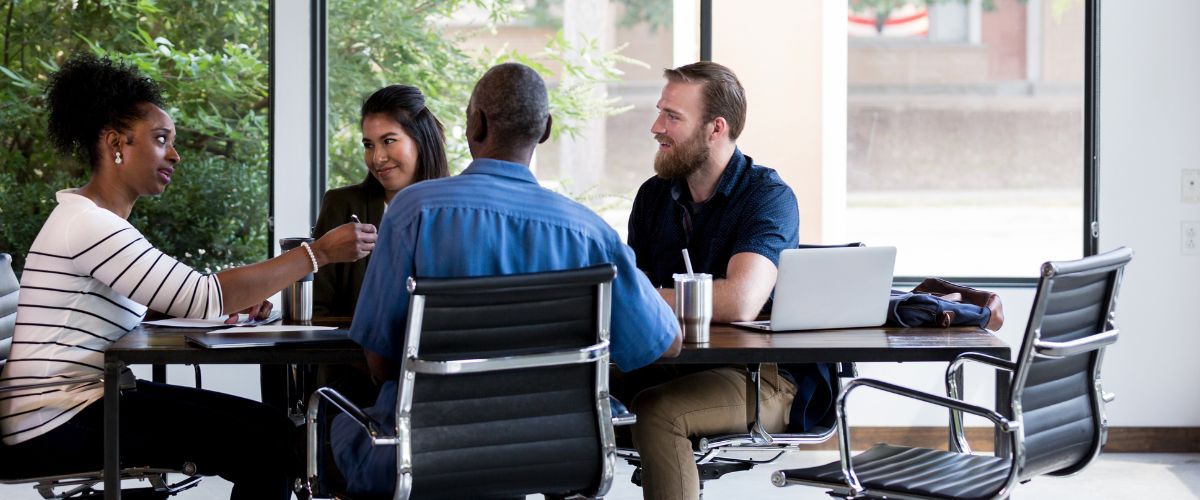Face-to-face events are crucial to building brand loyalty, communicating key messages and sparking action that drives revenue and results. But for an event to be effective, it’s not enough for people to attend – they actually need to hear the messages, engage with the brand and understand their call to action. So the key question we need to be asking is how do we build an event that reaches every attendee?

The answer to delivering an event that reaches each and every attendee lies, of course, in personalization – not just personas that categorize attendees by interest or profile, but by true custom design that acknowledges the individual and meets each attendee’s needs. By creating culturally, physically, intellectually and emotionally inclusive events, you will not only broaden the event’s sphere of influence, but you’ll engage a larger audience on a deeper level.
True inclusivity in event design requires embracing neurodiversity into our approach, and ensuring that our events are accessible and engaging for a variety of cognitive and sensory processing styles.
What is neurodiversity?
Neurodiversity is a nonmedical word used to express the concept that people’s brains function differently. This may refer to differences in social preferences, ways of learning, ways of communicating or ways of perceiving the environment. It encompasses a range of conditions, including autism spectrum disorder, attention deficit hyperactivity disorder (ADHD), brain injuries, bipolar disorder, dyslexia, dyscalculia, Obsessive Compulsive Disorder (OCD), Tourette’s and others. Neurodivergence may cause challenges, i.e., with communication or mobility, but it may also produce strengths. It’s not the same as a disability or mental illness, but it can be associated with them.
How many people are considered neurodivergent?
Recent estimates indicate that 15-20% of the population fall within the neurodivergent bracket – and experts speculate that real numbers are closer to 40%. In recent years, hiring trends show that some employers actively embrace neurodiversity as a strength. For example, dyslexia can correspond to out-of-box thinking and the ability to recognize unique patterns, and ADHD is often recognized for enabling intense focus, creativity and high performance under pressure – skills that are considered essential for certain professional tasks and positions.
Best practices for inclusive experience design
Neurodivergent attendees process information differently and their experience can be strongly influenced by environmental factors. Making your event inclusive for this audience requires rethinking some traditional planning norms. The process begins with agenda planning and venue selection and cascades into content format, environmental design, and F&B choices. Here are some powerful, simple, and cost-effective ways to make your event more inclusive:
- Take 5 – Allow space in your agenda for people to take care of themselves, and give them options to do so. Some may benefit from an activity to work off extra energy, whilst others may prefer stillness to combat overstimulation.
- Follow the light – Design lighting to minimize distraction and highlight only important content.
- Silence is golden – Create quiet spaces. Some people may feel more comfortable watching a general session with a small screen and headphones so that they can avoid surrounding conversations and noise. Some may even prefer to eat alone for a chance to recharge.
- Keep it simple – Even the most cleverly crafted message can be too much for some attendees – offer succinct, no-nonsense versions of written agendas and materials for easy comprehension.
- Default: Captions On – Incorporate captioning as much as possible. Different forms of networking and content delivered through multiple channels will appeal to differing learning styles, and with today’s advancements in AI, this should be an easy win.
- Enhance comfort – Offer noise-cancelling headphones as a gift option, place fidget tools in selective areas of the event, vary your general session seating types, and include space to pace at the back of the room. You might be surprised by the number of people who gravitate towards these things.
- Go hybrid or go home – Incorporate hybrid technology to allow guests to attend remotely – even if that ‘remote location’ is their guest room.
- Mindful meals – Pay close attention to dietary options and the variety of food and beverages you offer – many conditions are exacerbated by common allergens like gluten, dairy and nuts.
For more insights on impactful event design and, in particular, how to leverage technology to promote inclusion, check out The Collective‘s recent report on event tech.
Originally published Nov 6, 2023 10:10:25 AM
Last updated on Nov 16, 2023 11:03:31 AM


